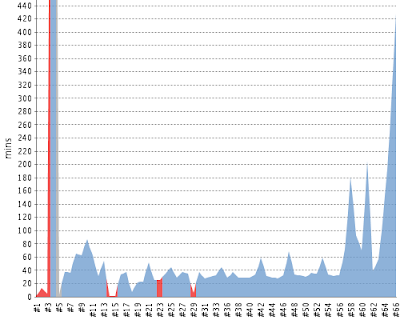Anyhow -- here is a nice piece from jil.org, a developer portal for mobile widgets. I used to do Konfabulator (now Yahoo) widgets long ago and I though I should see what's with these new "mobile" widgets. (The terms PDF is here ).
7. JIL’s right to use User ContentNow, this paragraph starts like a standard paragraph on many sites where they basically say the want to be legally allowed to display your product. So they need to be able to host, distribute and market the widget. Sounds nice. Obviously their partners need to be able to do that too. Ok, pretty standard so far...
1. With the exception of personal information, you hereby grant JIL a perpetual, unlimited, royalty-free, worldwide, non-exclusive, irrevocable, transferable license to run, display, copy, reproduce, publish, bundle, distribute, market, create derivative works of, adapt, translate, transmit, arrange, modify, sub-license, export, merge, transfer, loan, rent, lease, assign, share, outsource, host, make available to any person or otherwise use, any widgets or other content you provide on or through the Developer Site or which you send to JIL by e-mail or other correspondence including, without limitation, any ideas, concepts, inventions, know-how, techniques or intellectual property contained therein, for any purpose whatsoever and in any manner (“User Content”). JIL shall not be subject to any obligations of confidentiality regarding any such information unless specifically agreed by JIL in writing or required by law. You represent and warrant that you have the right to (a) grant the license set out above and to (b) upload the User Content on the Developer Site. You acknowledge that the license set out above includes the right for JIL to make the User Content available to a Sponsor and other entities with which JIL has contractual arrangements for further distribution of the User Content.
But here is the interesting part: they want to be able to modify your widget and create derivative works! So this is not the standard "hosting" agreement -- you are actually granting them a license on your source code to do as they please. If you combine this with the fact that every agreement of this kind (and obviously JILs too) has some indemnification clause, you get an interesting situation.
An interesting software would be one to track all these agreements. I think that by the end of your lifetime, it would be pretty scary to look at the dependency graph all these agreements have created between you and sites/companies, partner companies, merged companies, owners of bought companies.
In other words, if we define this "agreement distance" in the spirit of the Erdos number , I'd say that over a 30 years span the agreement distance becomes 1 for any reasonably active individual with any other major company or website.

